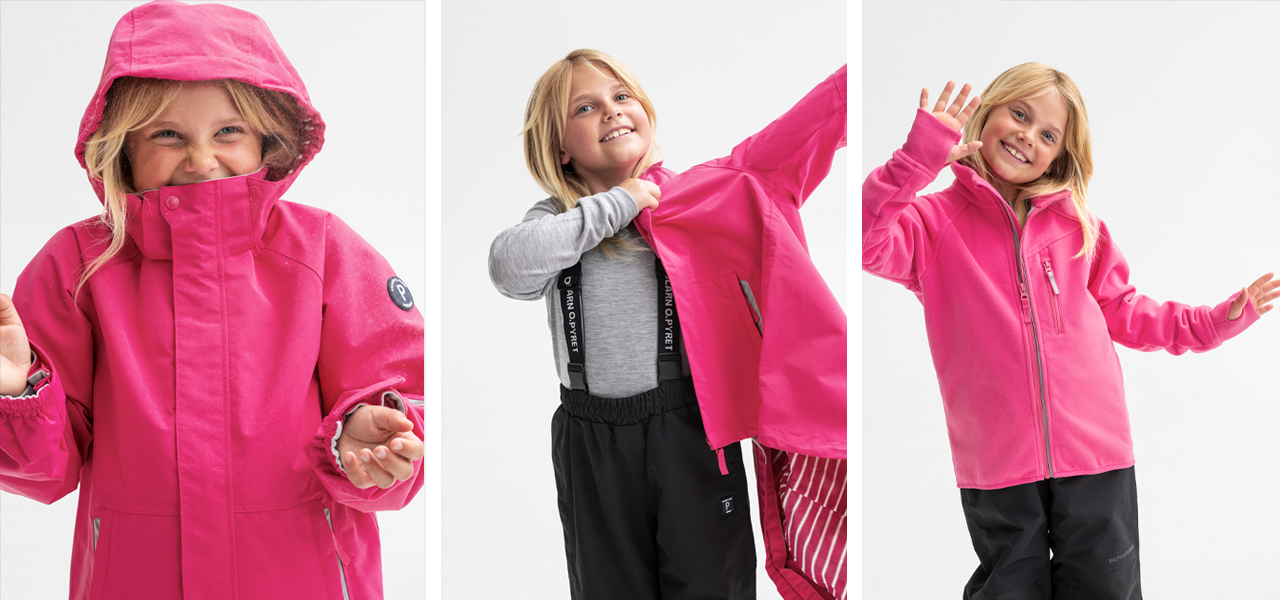Layering Guide
Posted by Your friends at PO.P! on May 22, 2020

The layering principle
Retain heat, wick away moisture, and keep the rain, snow and wind out. The layering principle is a brilliant way to weatherproof your child! They will be warm enough on the chilliest winter day and cool enough on a mild spring day, when they can easily unzip or remove a layer. And they will always be wearing breathable clothing perfect for fun activities in any kind of weather.
The layering principle consists of three layers:
- The inner layer that keeps the body warm and dry.
- The middle layer that insulates warmth under the outer layer.
- The outer layer that also keeps the warmth in and the weather out.
Layer 1
The inner layer keeps your child warm and dry. Active children get warm and perspire. They need a thin layer of clothing next to their body that will keep them warm yet has good breathability. Good breathability means that the material releases excess heat and moisture. Your child stays warm and dry, even when they’re perspiring.
Which material should I choose for Layer 1?
We recommend wool and polyester. Wool is a natural material that’s perfect for Layer 1. Even if wool gets wet, it will still keep you warm. Polyester is a cheaper alternative to wool. Cotton is most comfortable against the skin in mild weather and when your child is only moderately active. But if your child perspires a lot, the cotton will absorb moisture and they will get wet and cold, as cotton lacks the ability to wick away moisture.
Here you'll find all our wool and thermal layers.
Layer 2
The middle layer acts as thermal insulation. A good middle layer is airy, with good breathability that retains heat at the same time as it releases moisture, so your child stays warm and dry, even if they perspire. The thickness of this garment can vary depending how cold and windy it is and your child’s activity level. You can use several garments as a middle layer and remove them as necessary. So make sure this garment has a zip or other opening that makes it easy for your child to open and remove.
Which material should I choose for Layer 2?
Supple fleece, wool and wool terry are all good materials that breathe and retain heat –wool terry is the warmest.
Here you'll find our wool clothes and fleece.

Layer 3
The outer layer that keeps warmth in, and wind, rain and snow out. Simply put, it keeps you warm and dry in all kinds of weather.
Layer 3 must satisfy many criteria: it should be durable yet still flexible enough to play in. It should wick away moisture from the body, but not let in water and wind from the outside. And it should have 360-degree reflectors to ensure your child is visible in all kinds of weather and from all angles. Just for starters. Check out the descriptions of our Layer 3 products to see all their functions and characteristics.
Here you'll find our shell clothes, rainwear and windfleece.

Windfleece
Psst! Windfleece has an unique button solution that is easy to attach onto our shell layers. Works as both layer 2 and 3.
